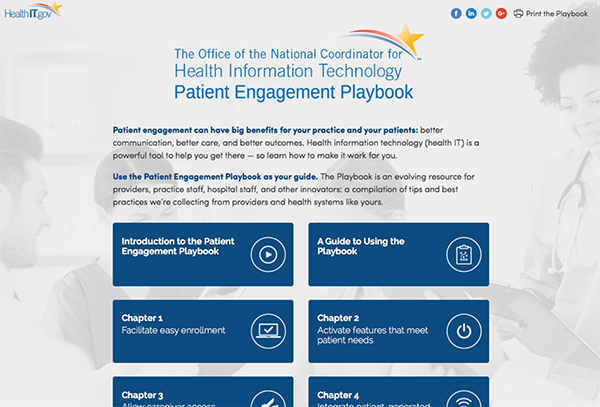
The ability of individuals to easily and securely access and use their health information electronically serves as one of the cornerstones of nationwide efforts to increase patient and family engagement and advance person-centered health. Patient engagement provides big benefits for your practice and your patients. Those benefits include better:
Research shows that giving patients access to their clinical information empowers them to increase patient engagement and to improve health outcomes. Health information technology (health IT) is a powerful tool to help you get there — so learn how to make it work for you.
The Patient Engagement Playbook is a tool for healthcare clinicians, practice staff, hospital administrators, and others who want to leverage health IT — starting with electronic health record (EHR) patient portals — to engage patients in their health and care.
The Playbook’s an evolving compilation of tips and best practices we’re collecting from clinicians and health systems like yours.

In addition to the Patient Engagement Playbook, we’ve developed other health IT tools and resources to increase patient education, awareness, and involvement. The tools also show the value and benefits of patient engagement.
These modules offer innovative strategies that can help your practice provide a better patient experience.
New Patient Pre-registration — Pre-registration can make new patient check-in more efficient — saving time and money for your practice.
Team-based Care — This model engages more staff in patient care, allowing for an uninterrupted meeting between the physician and the patient.
Daily Team Huddles — Daily team huddles are a quick, efficient way to help staff communicate and focus on specific action items.
Pre-visit Planning — Pre-visit planning can help your practice streamline patient visits and identify gaps in patient care.
Patient and Family Advisory Councils — Understanding patient and caregiver perspectives is key to improving communication with patients and families.
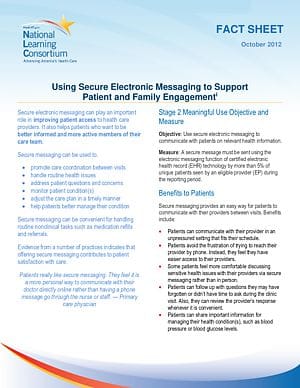
Overview
Fact sheet on using secure electronic messaging to support patient and family engagement
Who it’s for
Clinicians and support staff
When it’s used
To implement secure messaging to support Stage 2 of Meaningful Use; to communicate benefits to patients or clinicians, or to address common concerns
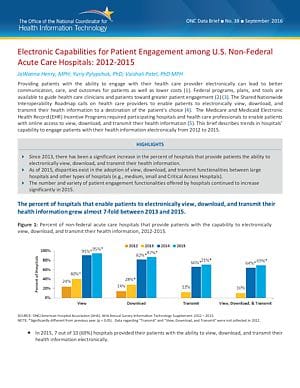
Overview
Research brief on the use of electronic capabilities for patient engagement among U.S. and non-federal Acute Care Hospitals (ACHs)
Who it’s for
Clinicians in ACH settings and health IT professionals
When it’s used
To plan for using electronic patient-engagement tools
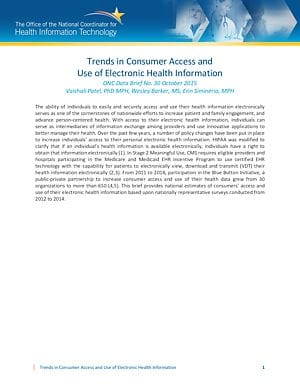
Overview
Research brief on trends in consumer access and use of electronic health information (EHI), gaps in health information exchange, and recommendations to increase awareness and usage
Who it’s for
Clinicians, policy makers, and healthcare professionals
When it’s used
To educate about, and plan for, electronic patient-engagement tools
Overview
Information about the Blue Button ® Initiative — a public-private partnership to provide consumers with easy access to their health records in a format they can use
Who it’s for
Healthcare organizations, healthcare professionals, and health IT professionals
When it’s used
To plan for, and promote awareness of, patient engagement in health and healthcare using Blue Button ®

Overview
Fact sheet on how to integrate a patient portal into a practice’s operations; explains the link between patient portals and Meaningful Use; provides tips to implement an effective and engaging patient portal
Who it’s for
Clinicians and health IT implementers
When it’s used
To prepare for meeting Stage 2 Meaningful Use objectives
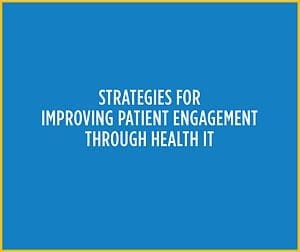
Overview
This interactive document walks clinicians through strategies they can use to engage patients with health IT
Who it’s for
Primary care clinicians
When it’s used
To learn about effective patient engagement
Overview
Video about creating systems to help people access their health information more easily
Who it’s for
Patients and healthcare clinicians
When it’s used
To plan EHR implementation and to promote patient engagement in healthcare
Learn more about COVID-19 and telehealth at:
The HHS telehealth website, which provides resources to help patients understand what telehealth is and how they can use it. It also directs providers to resources for integrating telehealth into their practices and includes information about policy changes related to COVID-19.
The National Consortium of Telehealth Research Centers’ COVID-19 page, which provides telehealth resources to help providers address COVID-19.
Telehealth can help patients and clinicians access and provide critical health services during the COVID-19 public health emergency. Explore this section to learn about resources and tools focused on telehealth implementation as well as policies that can inform your approach to using telecommunication technologies.
During the COVID-19 public health emergency, clinicians can use telehealth and remote communication technologies that may not be fully HIPAA compliant — such as FaceTime, Facebook Messenger, Google Hangouts, Zoom, or Skype — without being penalized for noncompliance with HIPAA rules related to the good faith provision of telehealth. For details about this, see the Notification of Enforcement Discretion issued by the HHS Office for Civil Rights (OCR). For more information, read OCR’s FAQs on Telehealth and HIPAA, visit OCR’s webpage on HIPAA and COVID-19, or check out the OCR webinar about HIPAA and COVID-19 (see corresponding slide deck).
In addition, read guidance from the HHS Centers for Medicare and Medicaid Services on temporary flexibilities to fight COVID-19, coronavirus waivers and flexibilities, and current emergencies.
The Department of Health and Human Services’ (HHS) Health Resources and Services Administration (HRSA) defines telehealth as the use of electronic information and telecommunications technologies to support long-distance clinical healthcare, patient and professional health-related education, public health, and health administration.
Telecommunication technologies include:
Telehealth differs from telemedicine because it encompasses a broader scope of remote healthcare services. Telemedicine refers specifically to remote clinical services. Telehealth, in addition to clinical services, includes remote non-clinical services, such as:
Although people often use telemedicine and telehealth interchangeably, telemedicine refers specifically to interactive health communications with clinicians on both “ends” of the exchange. For example, telemedicine allows you to:
In addition to telemedicine technologies, telehealth includes direct, electronic patient-to-clinician interactions. It also includes medical devices that collect and transmit health information to help monitor or manage chronic conditions. Examples of medical devices include:
Telehealth consists of these 4 basic methods:
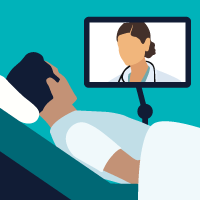
Live video (synchronous)
Live, 2-way interaction between a person (patient, caregiver, or clinician) and a clinician using audiovisual telecommunications technology. These video conferences used to be exclusively clinician-to-clinician telemedicine encounters. But many companies, such as Teladoc and LiveHealth Online, connect patients directly to clinicians every day.
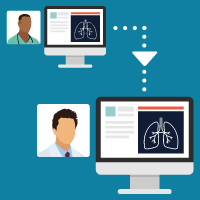
Store-and-forward (SFT)
Transmitting videos and digital images through a secure, electronic communications system. As compared to a “real-time” visit, this service provides access to data after it’s been collected. Generally, clinicians record or capture diagnostic information (like X-rays, CT scans, EEG printouts) at the patient’s care site. Then they send them to a specialist in another location. Because of the time delay between the image’s transmission and when it’s interpreted, SFT is often referred to as “asynchronous.”
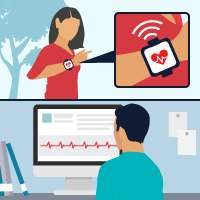
Remote patient monitoring (RPM)
Personal health and medical data collection from a patient in one location, which is then transmitted to a clinician in a different location. RPM helps clinicians and patients manage chronic illness. It uses devices, such as Holter monitors, to transmit information, including vital statistics — like heart rate, blood pressure, and blood oxygen levels.
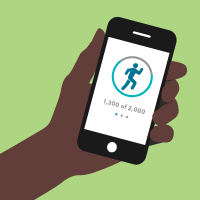
Mobile health (mHealth)
Smartphone apps designed to foster health and well-being. These apps offer a wide range of health-related help. A small sample includes apps that send targeted text messages to encourage healthy behaviors, alerts about disease outbreaks, and reminders that help patients adhere to specific care regimens. Increasingly, smartphones may use cameras, microphones, or other sensors and transducers to capture vital signs and venture into RPM.
Telemedicine supports care coordination by allowing you to communicate with patients more regularly and use remote-monitoring tools to track acute and chronic conditions. Use this module to identify the technology that best meets your patients’ needs.
Overview
Comprehensive online resource center that provides help, education, and information to organizations and individuals actively providing, or interested in providing, medical care at a distance
Who it’s for
Clinicians currently offering, or who want to offer, telehealth services
When it’s used
To find resources that help explore or expand the availability of healthcare to underserved populations
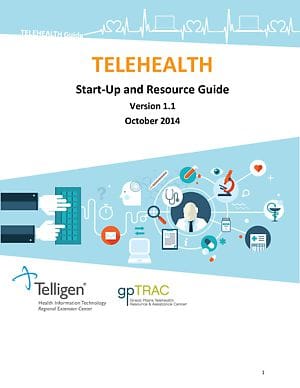
Overview
This guide provides an overview and framework for implementing telehealth in critical access hospitals (CAHs) and rural areas. It’s also intended to point readers to reliable and informative resources for learning about telehealth and the organizations that support the various ways to use telehealth
Who it’s for
CAHs in rural areas and health IT implementers
When it’s used
To plan and implement telehealth resources
Explore these website resources to learn more about telehealth:
Use health IT to engage patients in their healthcare.
Content last updated on: June 3, 2020
Sign up for email updates about the Health IT Playbook.